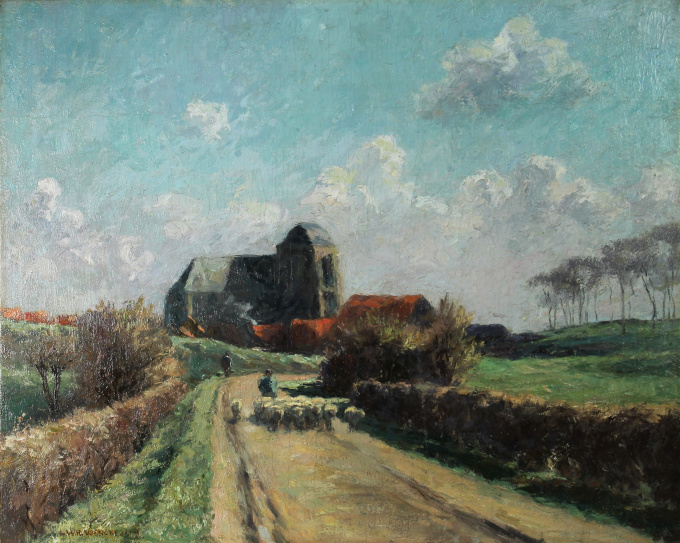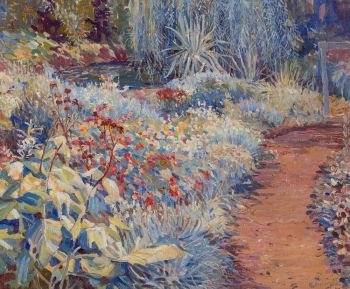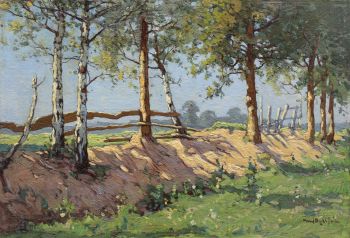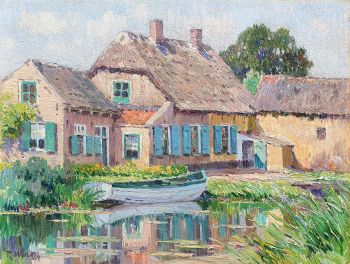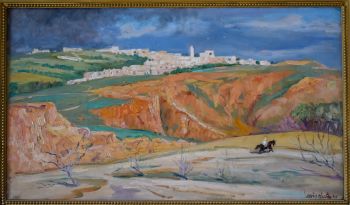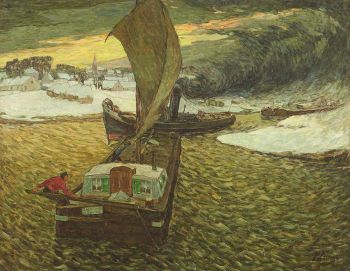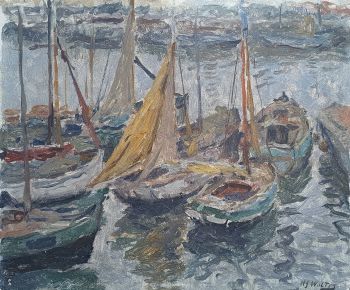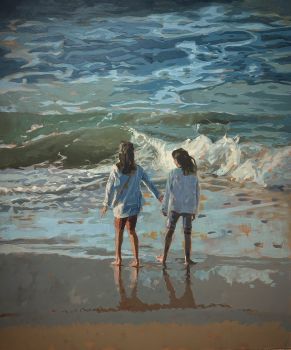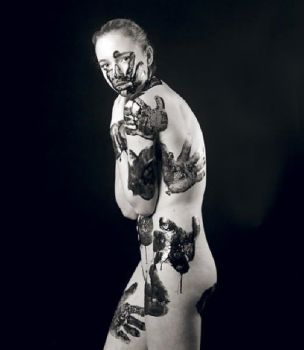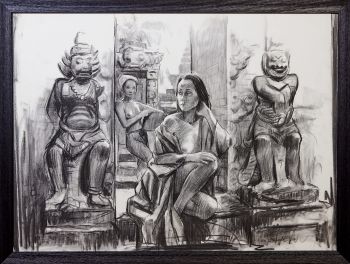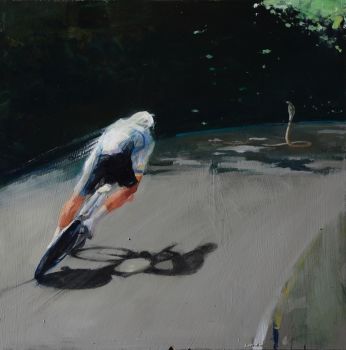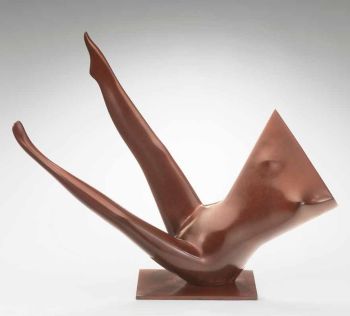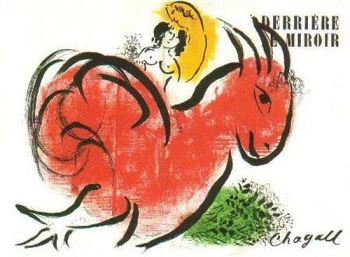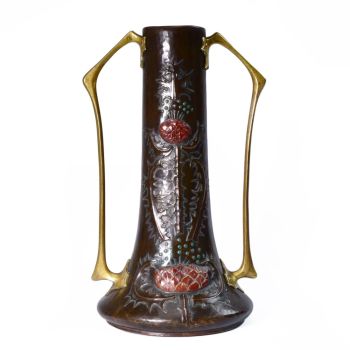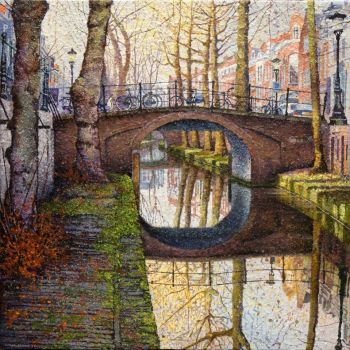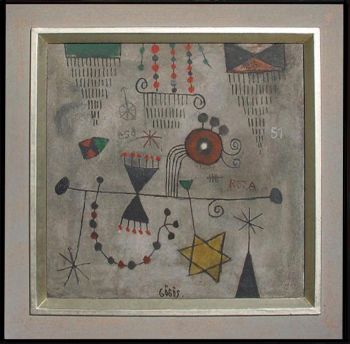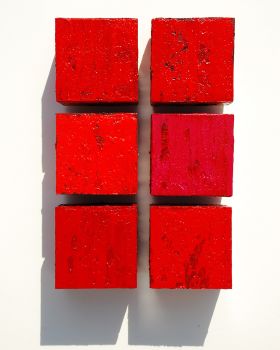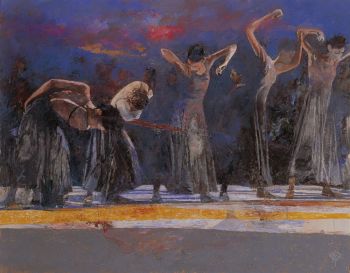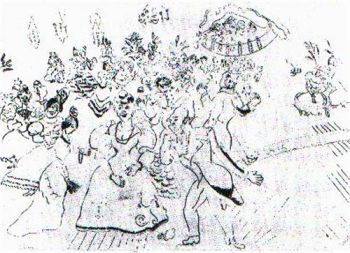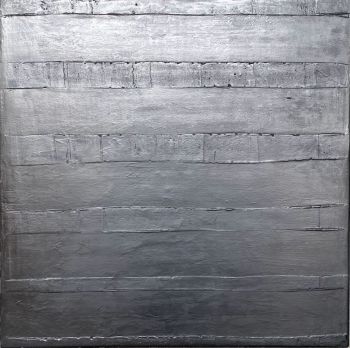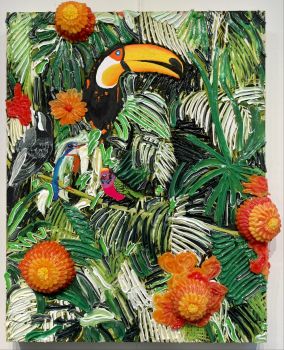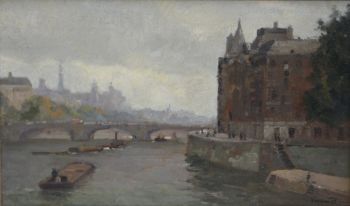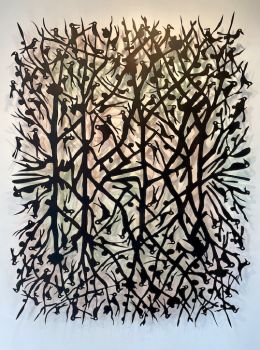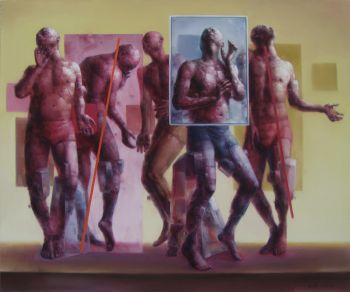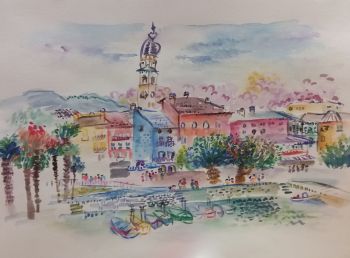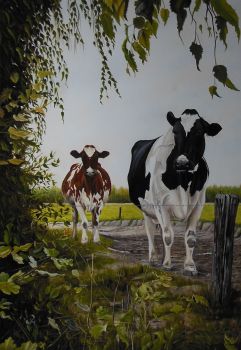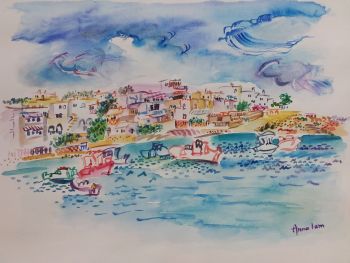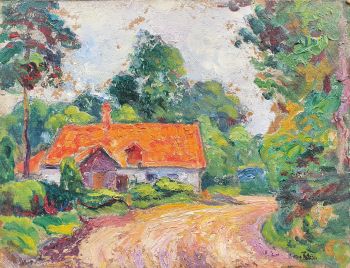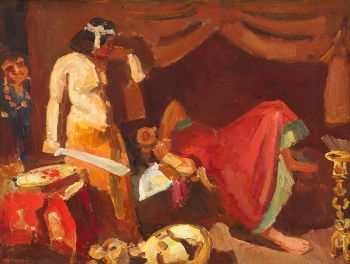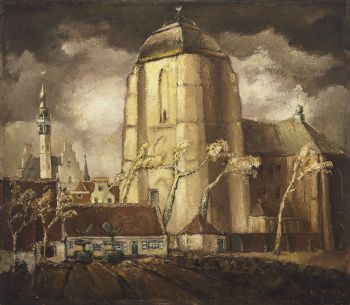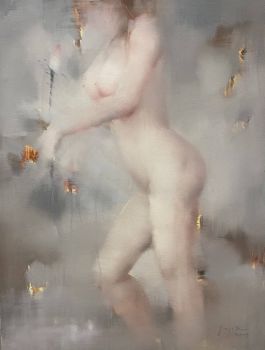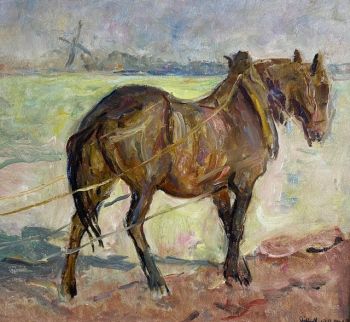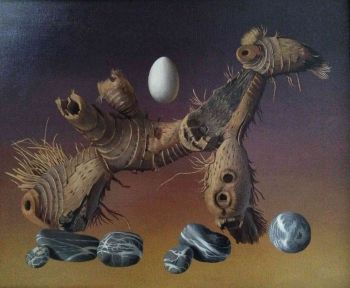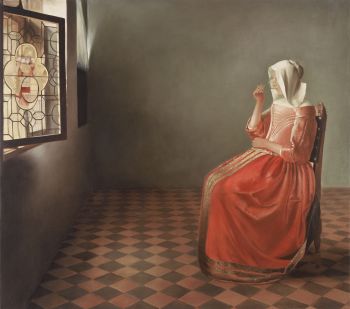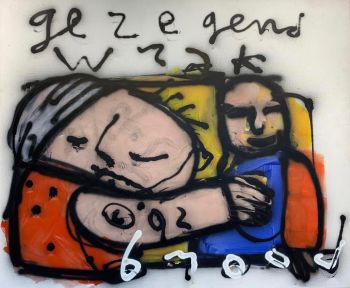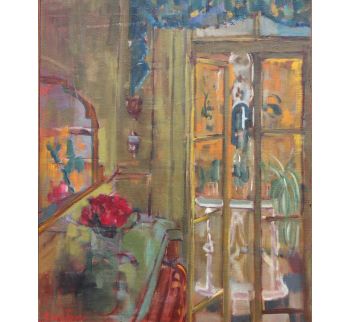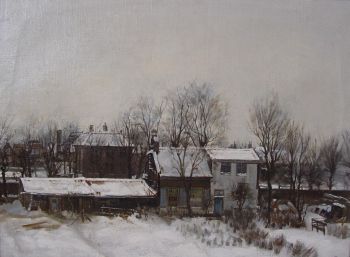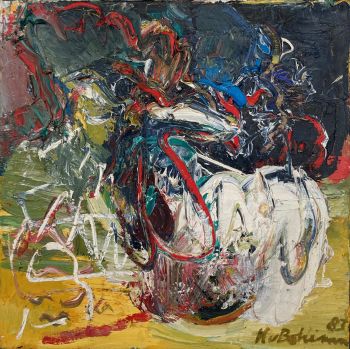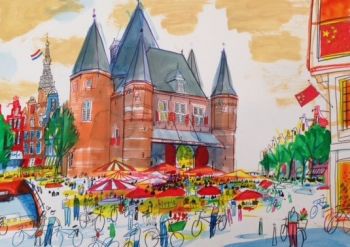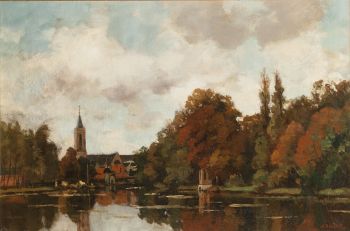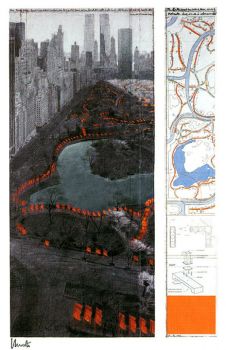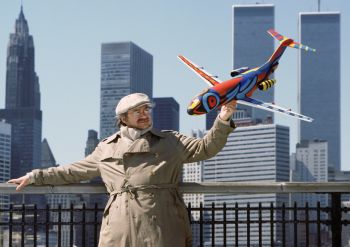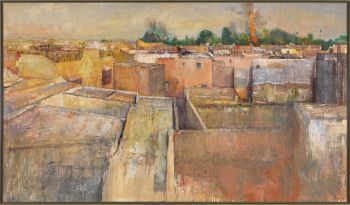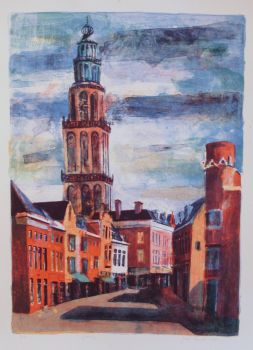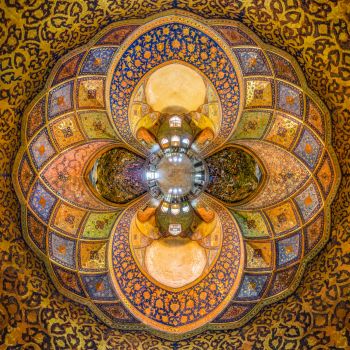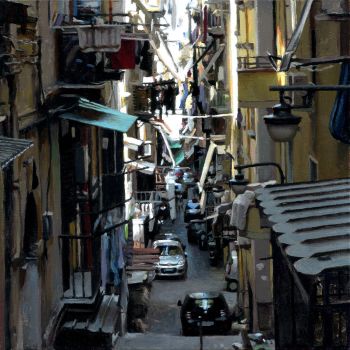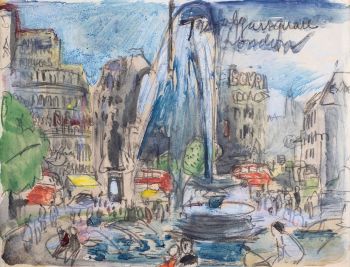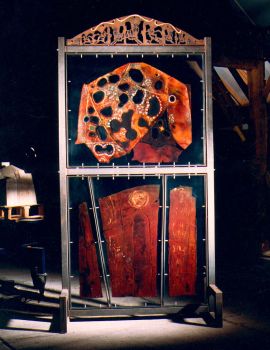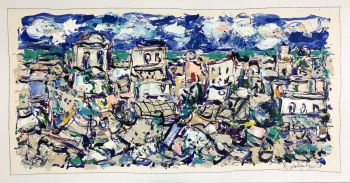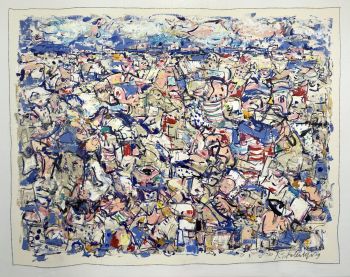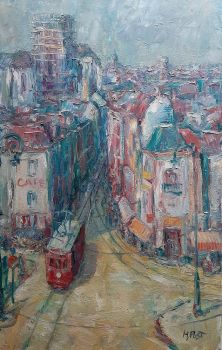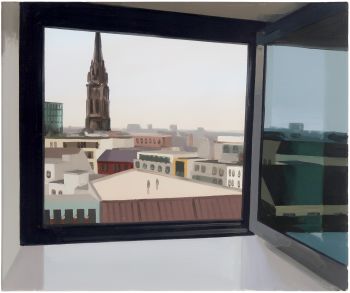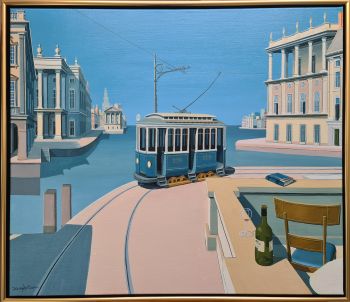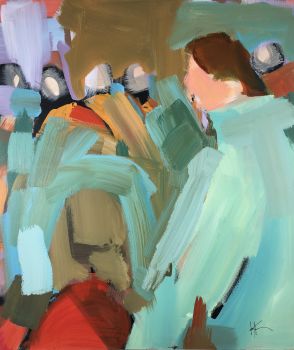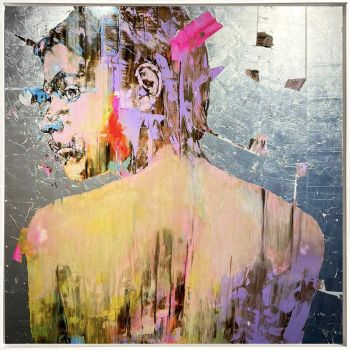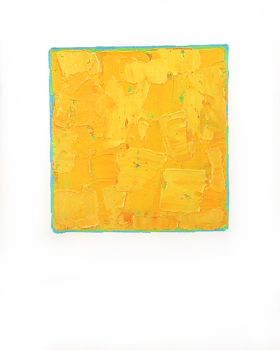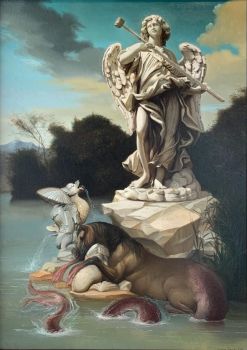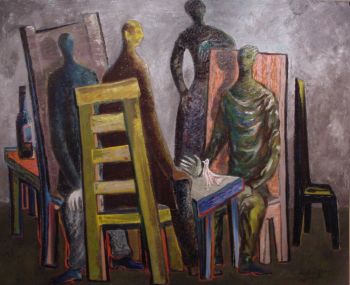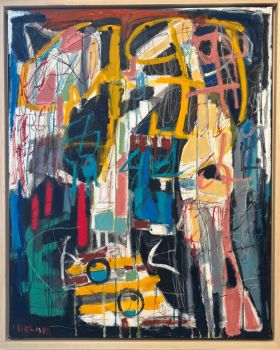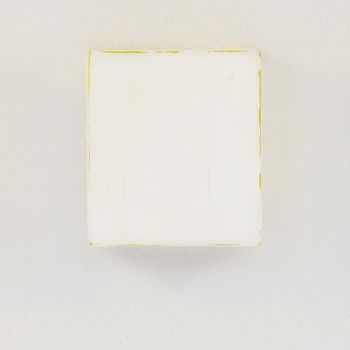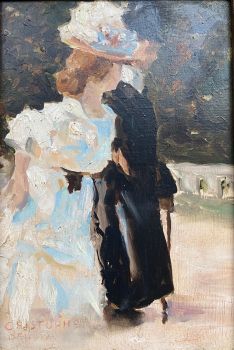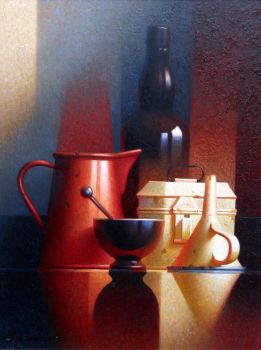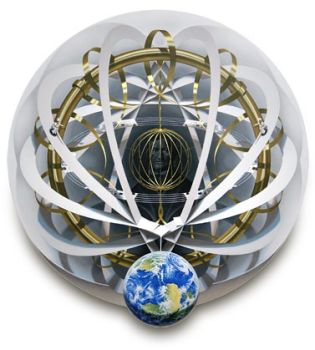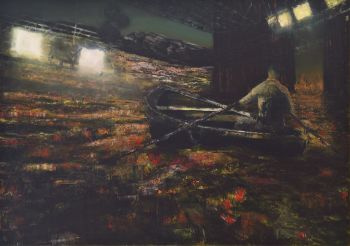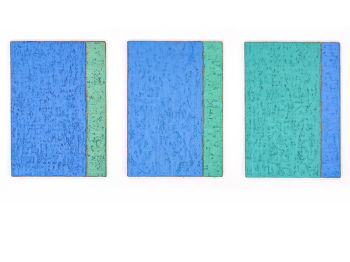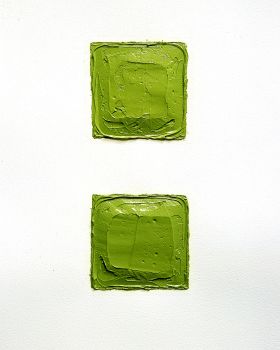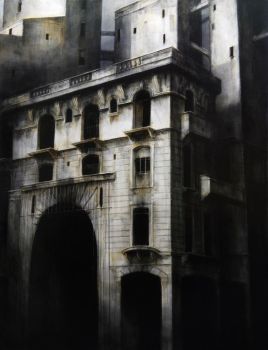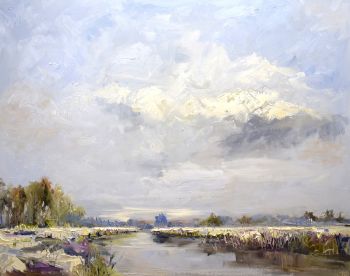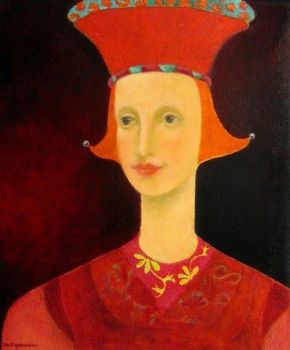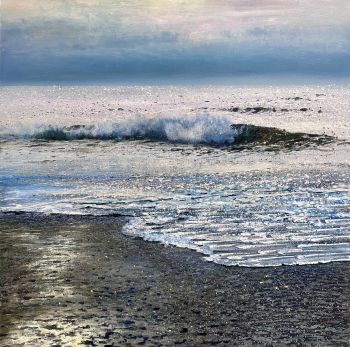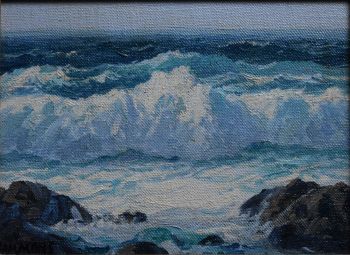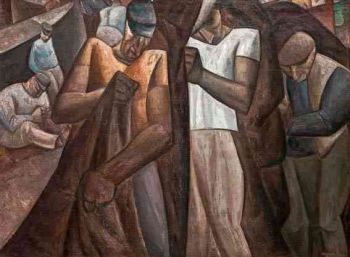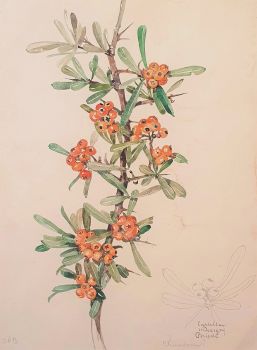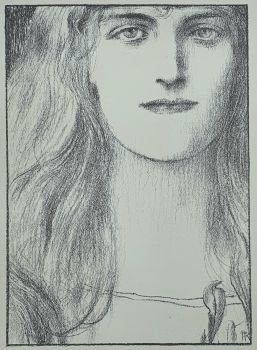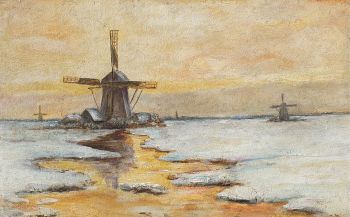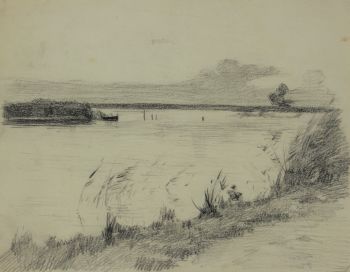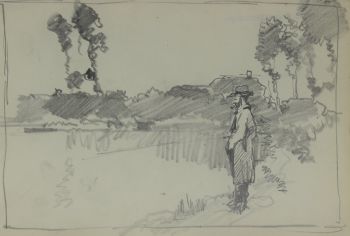View on the Church of Our Lady in Veere – Gezicht op de Grote Kerk in Veere 1910 - 1920
Willem Wenckebach
ToilePeinture à l'huilePeindre
65 ⨯ 81 cm
ConditionExcellent
€ 3.800
Klooster Fine Art
- Sur l'oeuvre d'art[EN]
Willem Wenckebach probably painted this view on the Church of Our Lady around 1917, around the time he specialized in painting, after his initial success as an illustrator. The work shows the small town of Veere in the Dutch province Zeeland, seen from the North-West. On the foreground, a shepherd walks his flock out of town. In the background the Church of Our Lady – or Grote Kerk – dominates the landscape.
Wenckebach painted the view in a luminist style, emphasizing the effect of the light of the morning sun lighting the church. The technique he used is akin to the impressionists, which shows most clearly in his loose and varied brushwork. Especially in the sky but also throughout the painting he displays his mastery of colour.
Veere is situated on the coast and historically was a successful trade town on the former island of Walcheren. In the early twentieth century the region became a popular destination for artists to visit, particularly the city of Domburg. The seaside resort attracted artists like James McNeill Whistler, Piet Mondriaan and Jan Toorop.
[NL]
Willem Wenckebach schilderde dit gezicht op de Onze-Lieve-Vrouwekerk in Veere vermoedelijk rond 1917. Dat is rond de tijd dat hij zich specialiseerde in schilderen, na zijn aanvankelijke succes als illustrator. Het schilderij toont het kleine, Zeeuwse plaatsje Veere, vanaf het Noordwesten gezien. Op de voorgrond loopt een herder met zijn kudde het dorp uit. De achtergrond word gedomineerd door de aanblik op de Onze-Lieve-Vrouwe- of Grote Kerk.
Wenckebach schilderde het werk in lijn met de luministen, waarbij hij het effect van het ochtendlicht op de kerk benadrukte. De schildertechniek die hij gebruikte is verwant aan het werk van de impressionisten, wat vooral terugkomt in zijn vrije en gevarieerde penseelvoering. Voornamelijk de lucht, maar ook verspreid door het schilderij laat hij veel gevoel voor kleur zien.
Veere is gesitueerd aan de kust, en was een historisch belangrijke handelsstad op het toenmalige eiland Walcheren. In de vroege twintigste eeuw werd de regio een gewilde bestemming voor kunstenaars – met name het nabij gelegen Domburg. Die kustplaats trok grote kunstenaars als James McNeill Whistler, Piet Mondriaan en Jan Toorop aan. - Sur l'artiste
Ludwig Willem Reymert Wenckebach, mieux connu sous le nom de Willem Wenckebach, était un artiste néerlandais polyvalent. Il a travaillé comme peintre, illustrateur, concepteur de reliure et graphiste, et était surtout connu pour ses aquarelles pour les albums Jac's Verkade. P. Thijsse, en plus des collaborations avec Jan Voerman Jr. et Jan van Oort.
En 1878, Wenckebach devient apprenti chez D.P. van Lokhorst et Jacob Eduard van Heemskerck van Beest à Utrecht, après quoi il étudie à Paris entre 1880 et 1884 grâce à une bourse royale. De retour aux Pays-Bas, il devient membre du Genootschap Kunstliefde et développe une amitié avec Anthon van Rappart, avec qui il peint souvent « en plein air ».
Wenckebach, connu pour ses peintures de paysages, était également ami avec des personnalités telles que Hendrik Petrus Berlage et Antoon Derkinderen. Il expose régulièrement chez Arti et Amicitiae et présente des expositions personnelles chez des marchands d'art à partir de 1910. Son travail, principalement dans le style de l'école de La Haye, se concentre sur les paysages de régions telles que Wolfheze, Drenthe et les dunes hollandaises.
Après 1917, Wenckebach se consacre entièrement à la peinture et cesse d'illustrer. Il a également enseigné à l'École des Arts Appliqués de Haarlem, avec des étudiants comme son cousin Oswald Wenckebach et d'autres comme Rie de Balbian Verster-Bolderhey et Johan Briedé.
Êtes-vous intéressé par l'achat de cette oeuvre?
Artwork details
Related artworks
- 1 - 4 / 24
Herman Bogman jr.
Le Pont au Change et Le Conciergerie in Paris 1935 - 1945
Preis auf AnfrageAdelwein Kunst
1 - 4 / 24Jean-François Rauzier
Barceolona Veduta - Limited edition of 8 2019
Preis auf AnfrageVilla del Arte Galleries
Jean-François Rauzier
Poder - Limited edition of 8 2018 - 2024
Preis auf AnfrageVilla del Arte Galleries
Herbert Fiedler
Stadsgezicht bij avond/ Café du tabac, Parijs1931
Preis auf AnfrageStudio 2000 Art Gallery
Jean-François Rauzier
Veduta Amsterdam 1 - Limited edition of 8 2015
Preis auf AnfrageVilla del Arte Galleries
Jean-François Rauzier
Singapore by Night - Limited edition of 8 2017
Preis auf AnfrageVilla del Arte Galleries
1 - 4 / 24- 1 - 4 / 24
- 1 - 4 / 12

